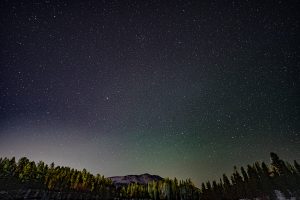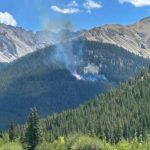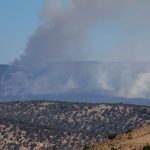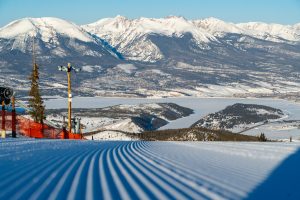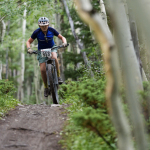With wildfires raging, drought has ‘consumed’ Colorado’s Western Slope. Will rain in the forecast help?
Firefighters are bracing for lightning and high winds. But forecasters are optimistic that storms could also bring precipitation to help wildfire conditions.
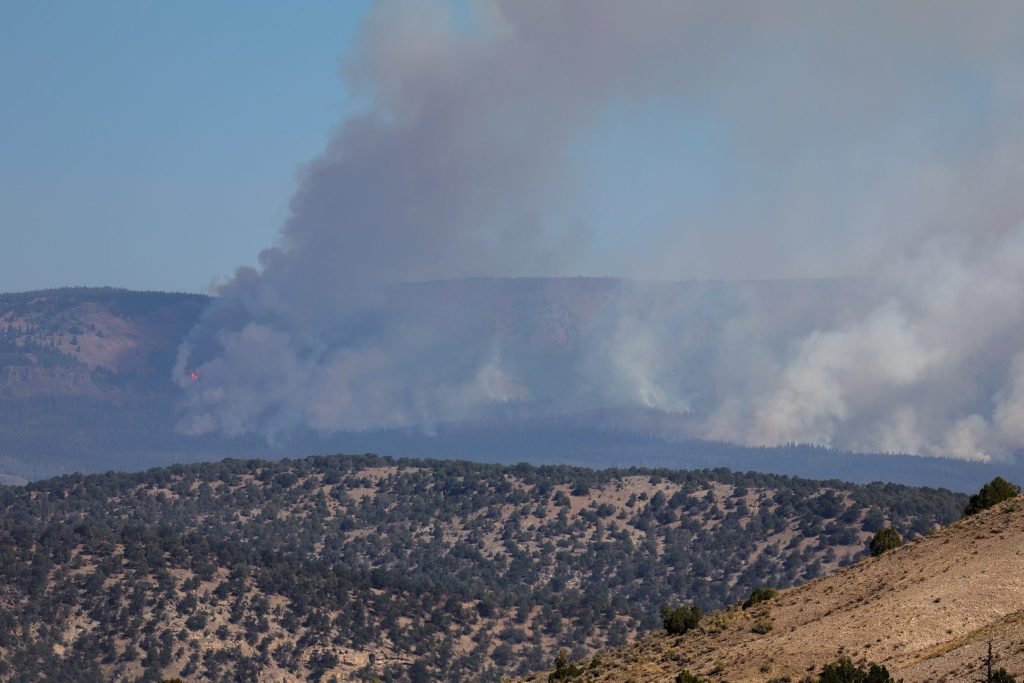
Chris Dillmann/Vail Daily
Residents of Meeker, near where the fifth-largest wildfire in Colorado’s history has raged throughout August, woke up Friday to a cooler morning than they’ve felt in weeks. But smoke from the 137,755-acre Lee Fire still plumed overhead.
Amid a hot, dry summer, Colorado climatologists are optimistic that a stretch of cooler, wetter weather forecast for the next week could help to lessen the extreme drought and help firefighters battling wildfires across the Western Slope.
With thunderstorms expected, heavy rain could “drastically” reduce fire activity on the Lee Fire and the nearby 14,518-acre Elk Fire, Rocky Mountain Complex Incident Management Team 1 Public Information Officer Kira Powell said Friday. But for firefighters, Powell said, “It’s rarely that simple.”
Lightning could spark new wildfires, and the “last thing we need is an additional large wildfire,” she said. So, firefighters are keeping a close eye on lightning maps and have fire engines strategically placed with air assets also ready to respond to any new starts.
Thunderstorms could also bring high winds, up to 50 mph, that could exacerbate fire behavior and challenge firefighters along the 24% of the Lee Fire that remains uncontained, Powell said. That’s why firefighters are focusing their efforts on these uncontained lines at the southern end of the fire, she added.
Even if it does rain, firefighters have to worry about flash flooding that could loosen dirt in burnt areas, sending rocks and other hazards tumbling downhill in steep areas, Powell said. Still, firefighters are hopeful that dousing rains line up with the fire, creating a brief window of lessened activity, she said.
“The rain will help firefighters with their job, taking advantage of that period of moisture,” Powell said. “But I don’t want anybody to assume that, ‘Oh it rained — the fire is out.'”
Fires burning on Western Slope
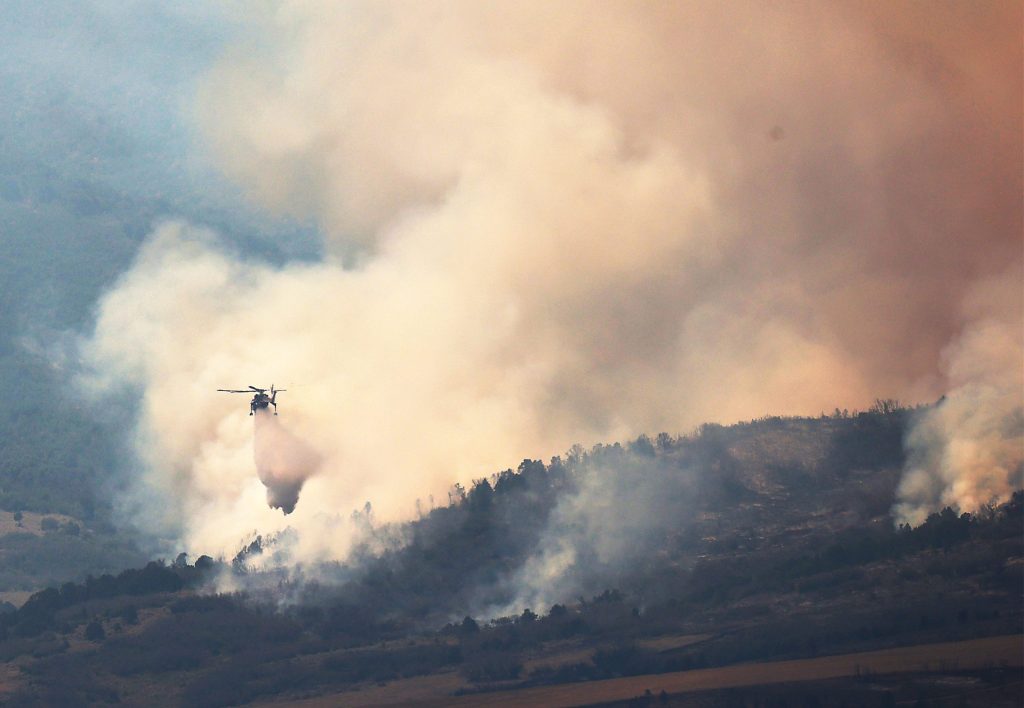
At other large wildfires burning across the Western Slope, the situation is much the same with firefighters hoping for rain but preparing for high winds and potential lightning this weekend.
At the Derby Fire, which has burned 4,112 acres in Eagle County and was 0% contained Friday morning, lightning and wind will be a “major concern” through the weekend, according to the Northern Rockies Complex Incident Management Team on scene. But firefighters are also watching for a “monsoonal push of moisture.”
As the Crosho Fire burned on 2,072 acres in South Routt County with containment at 57% Friday, Medicine Bow-Routt National Forest public affairs specialist Erin Voos said “there is hope” that cooler, wetter weather will help with suppression efforts. But the rain won’t be enough to lift the forest out of Stage 2 fire restrictions, Voos noted.
And, while scattered thunderstorms were expected to create “erratic winds” at the fire that was burning on 90 acres on La Plata Peak in Lake County on Friday, the Colorado Type 3 Incident Management Team there saw the relative humidity rise above 30%, decreasing fire behavior.
Hope ahead
While storms so far this summer have delivered more wildfire-sparking lightning than rain, Assistant Colorado State Climatologist Peter Goble said “the forecast this time really looks different, where I think we’ll see a lot more moisture reaching the ground.”
On the high end, places in the mountains could get 2 or 3 inches of rain in the coming days, with most areas expected to receive closer to 1 to 3 inches and some of the lower valleys likely to receive closer to a half inch, Goble said.
That is good news for the Western Slope, where he said, “since the second week of July especially, things have been about as dry as they’ve ever been in many locations across the High Country.”
Up until this potential stretch of cooler, wetter weather, Goble said the climate patterns this year have echoed 2020, when some of the largest fires in Colorado’s history burned hundreds of thousands of acres. At one weather station near Gunnison, he said the last 60 days have been the driest it’s ever been, going back more than 125 years.
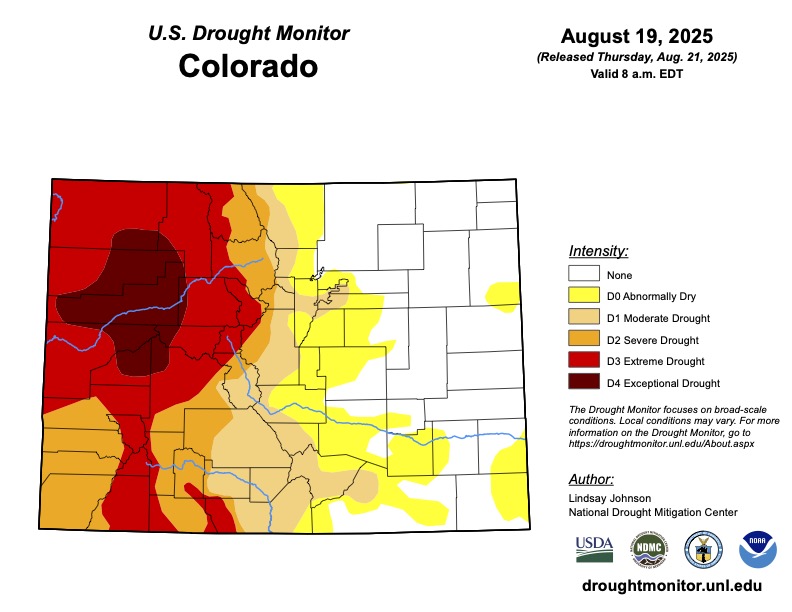
The latest U.S. Drought Monitor report shows “extreme,” Level 3 of 4, drought conditions across the Western Slope with “exceptional,” the highest level, drought conditions throughout much of Rio Blanco and Garfield counties.
While the pattern of cooler temperatures and higher chances for precipitation is expected to last for at least the next 10 days and potentially longer, Goble said, “we’re not going to dig ourselves all the way out” of the region’s deep drought conditions. But it will make “fighting some of these wildfires easier for at least the time being, and it lowers the probability of new major wildfires igniting.”
National Weather Service forecaster Kate Abbott said that precipitation since January is about 4.75 inches behind normal throughout much of Northwestern Colorado, where drought conditions are worst. But moisture in this region is expected to be 150% to 200% of normal through the rest of August, she said.
One thing that could determine how much impact the incoming precipitation has on the drought conditions is whether the moisture comes as short, scattered bursts of heavy rain or in storms that are more spread out with lighter, steadier rain. While “bursts of storms could give locations a good dose of rainfall,” it would be more inconsistent across the landscape, while lighter, widespread rain would be more beneficial to drought conditions overall, she said.
“It’s yet to be seen how much we’ll chip into that drought,” Abbott said. “But this is certainly the best signal we’ve had in a really long time to help mitigate those drought levels and those fire conditions and that dryness that has consumed Northwestern Colorado.”

Support Local Journalism

Support Local Journalism
As a Summit Daily News reader, you make our work possible.
Summit Daily is embarking on a multiyear project to digitize its archives going back to 1989 and make them available to the public in partnership with the Colorado Historic Newspapers Collection. The full project is expected to cost about $165,000. All donations made in 2023 will go directly toward this project.
Every contribution, no matter the size, will make a difference.

